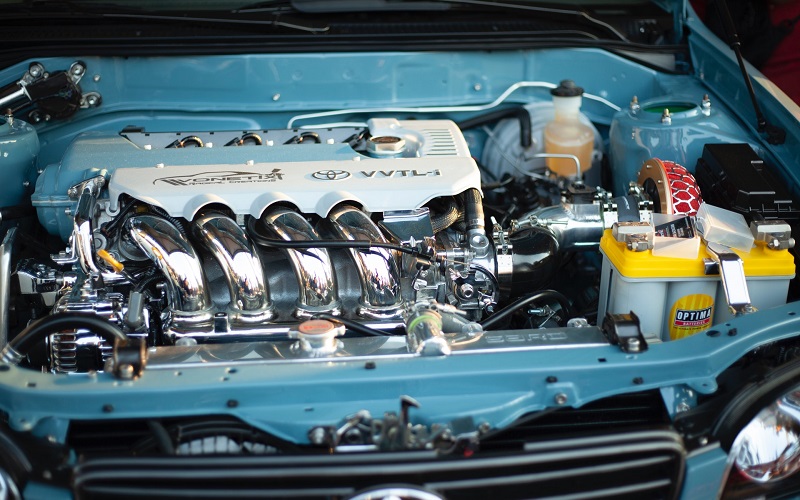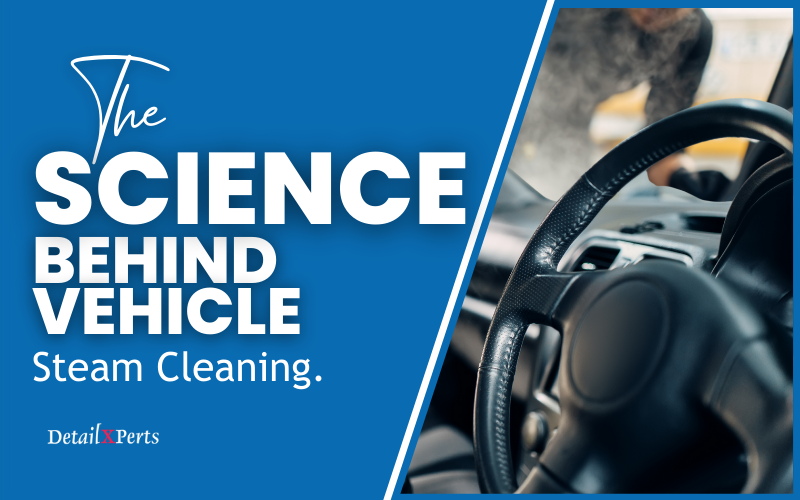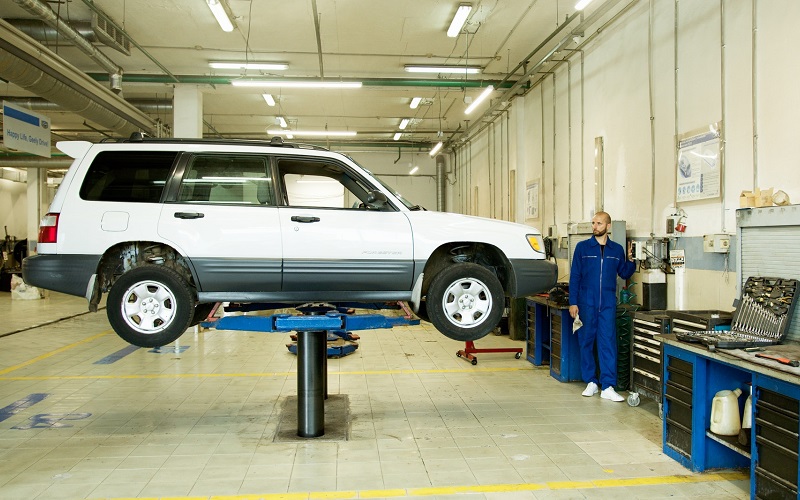Engine oil, grease and road grime will easily build up over time under the hood of your car. Pressure washing your car engine is one way to get it looking shiny and new again. However, the big question is can you pressure wash your car engine without damaging it? Yes, you can, providing you are extremely careful when working under the hood with all that water. Done right, a clean engine will not only look good but may also help the car to run better too.
There are several benefits to using a pressure washer. It gets the job done quickly. It also requires very little effort on your part because the high-pressure jets of water do the work. Moreover, it cuts out the dirty work of using cleaning rags, too. However, the main disadvantage is possible issues with your engine if you force water into places that are susceptible to water damage. Another downside is that a pressure washer uses a lot of water. This can also result in greasy, polluted runoff that ends up on your driveway or the street. Being fully aware of the pros and cons is important before you begin work on cleaning your engine bay.
7 Tips For Pressure Washing Your Car Engine
Make sure you know how to use a pressure washer before you direct high-pressure jets of water at your engine. A pressure washer is a powerful piece of equipment that works brilliantly at dislodging tough dirt and grime. However, if you don’t use it correctly, you risk damaging sensitive parts of the engine that may be expensive to fix. Once you are familiar with the power washer instructions and cleaning steps, take a look at our tips for best results.
1. Don’t Power Wash a Hot Engine
Directing cold, pressurized water onto a hot engine is asking for trouble. You could end up causing cracks in some of the components due to the abrupt change in temperature. Give your engine time to cool down before you reach for the power washer. Warm is okay but definitely not hot. Adhering to engine detailing basics like this is key to protecting the performance of your vehicle.
2. Use Plastic Wrap or Bags to Protect Sensitive Engine Parts
Prep and protect the engine bay before using a pressure washer. Fortunately, these days most modern cars have sealed-up electronics and components. Older vehicles, however, may not have the same protection. Also, it is possible that existing seals around caps and components can wear and fail over time. To be on the safe side, use plastic wrap or a plastic bag to cover the distributor, alternator and other electrical components. Extra-long rubber bands are ideal for securing bags in place. Don’t forget to remove all these temporary coverings once you have finished pressure washing your car engine.
3. Adjust the Water Pressure Setting and Nozzle
Pressure washers have different power settings to suit different jobs. The higher the PSI (pounds per square inch) the greater the force of the water. For example, a high PSI setting is fine for cleaning down your driveway but not suitable for pressure washing your car engine. Make sure you wash your engine on a lower setting. Otherwise high-pressure jets are going to force water into all the inaccessible nooks and crevices in the engine and can also get under seals etc. Using the correct nozzle makes a big difference, too. Choose a wider nozzle over one with a narrow tip. It creates less pressure and is more suitable for engine cleaning. Also, keep your distance. High pressure water jets in close proximity to the engine are damaging to sensitive parts.
4. Keep the Pressure Washer Moving
Never hold the pressure washer in one fixed position when you’re car pressure washing under the hood. Aiming pressurized jets of water at one part of your engine for a sustained amount of time is too risky. You could potentially cause problems and flood sensitive electrical components, which will ultimately affect the performance of the vehicle. For best results when pressure washing your car engine, keep the pressure head continually moving back and forth in sweeping motions while you work. The aim is to clean, not saturate the engine.
5. Use A Degreaser for Best Results
Using a degreaser on the engine before you wash it can help to speed up the job. If possible, use a biodegradable product or make a DIY engine degreaser to cut through stubborn grease build-up and oil. Biodegradable products will help to protect the environment by not creating a toxic runoff. Then let the power washer quickly rinse off the dirt. Alternatively, you could consider engine steam cleaning. Steam is an eco-friendly way to transform a filthy engine. Unlike pressure washing your car engine, steam cleaning uses very little water. Instead, it relies on a high temperature to break down stubborn engine dirt and grease. Professional detailers know all about engine steam cleaning dos and don’ts, so when in doubt hand the job over to the experts.
6. Pick a Sunny Day for Pressure Washing Your Car Engine
Check the weather forecast in advance. Pressure washing your car engine on a bright and sunny day is recommended. After you’ve washed your engine you can keep the hood popped open to let the warm air naturally speed up the drying process. You can also use microfiber towels or even an air blower, see below.
7. Use an Air Blower to Remove Excess Water
If you have an air blower in your auto detailing kit why not put it to good use? This kind of tool comes in very handy when you want to dry under the hood after pressure washing your car engine. Blowing the water out from the awkward spaces between engine parts and the parts themselves means there is less hand drying to do. It saves you time, too.
Conclusion
Pressure washing your car engine is one way to keep it clean, especially when you are short on time. A clean engine means a happier car. It helps to prevent corrosion and it makes maintenance jobs much easier. You can see potential problems, such as cracks or leaks, if the engine is not covered in grime. The key piece of advice is to proceed with caution and use our helpful tips to make sure you get the best results.
Understandably, you might be wary of the potential problems when pressure washing your car engine. It is natural to have concerns about whether the car will start or run smoothly after the engine has been exposed to a lot of water. Or you might simply prefer a greener way to make your car and engine shine. So why not schedule an appointment with DetailXPerts to have your car professionally detailed. If your car engine is in need of a clean, we can use the latest steam cleaning technology for superior results and with more consideration to the environment.
If you have enjoyed this post, take a moment to connect with DetailXPerts on Facebook. We regularly share car news, tips and advice with our followers who love their cars and want to keep them in top condition.





